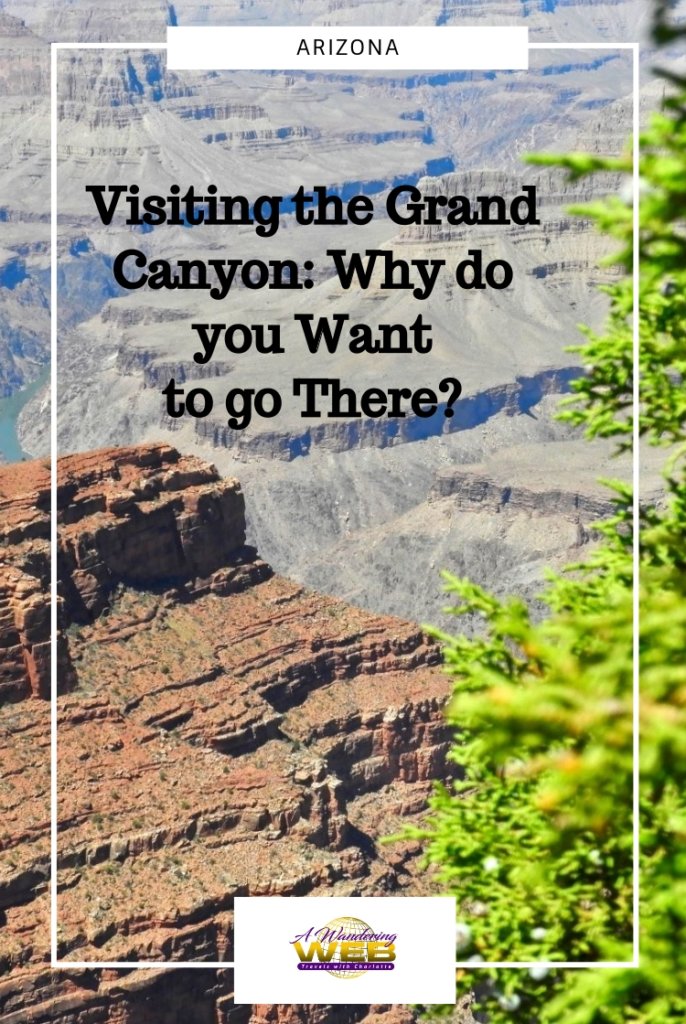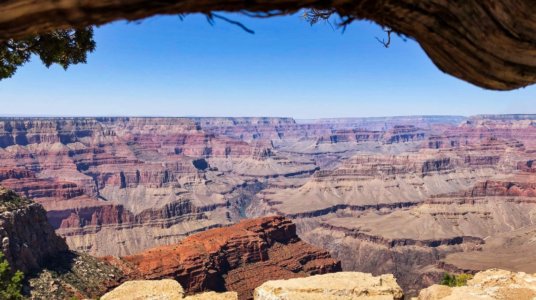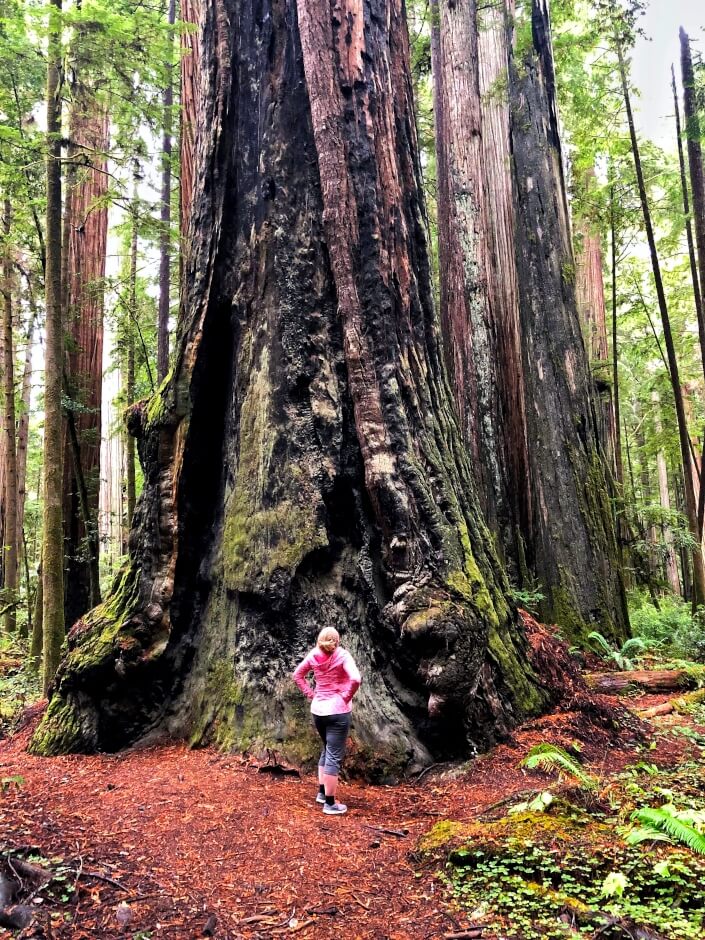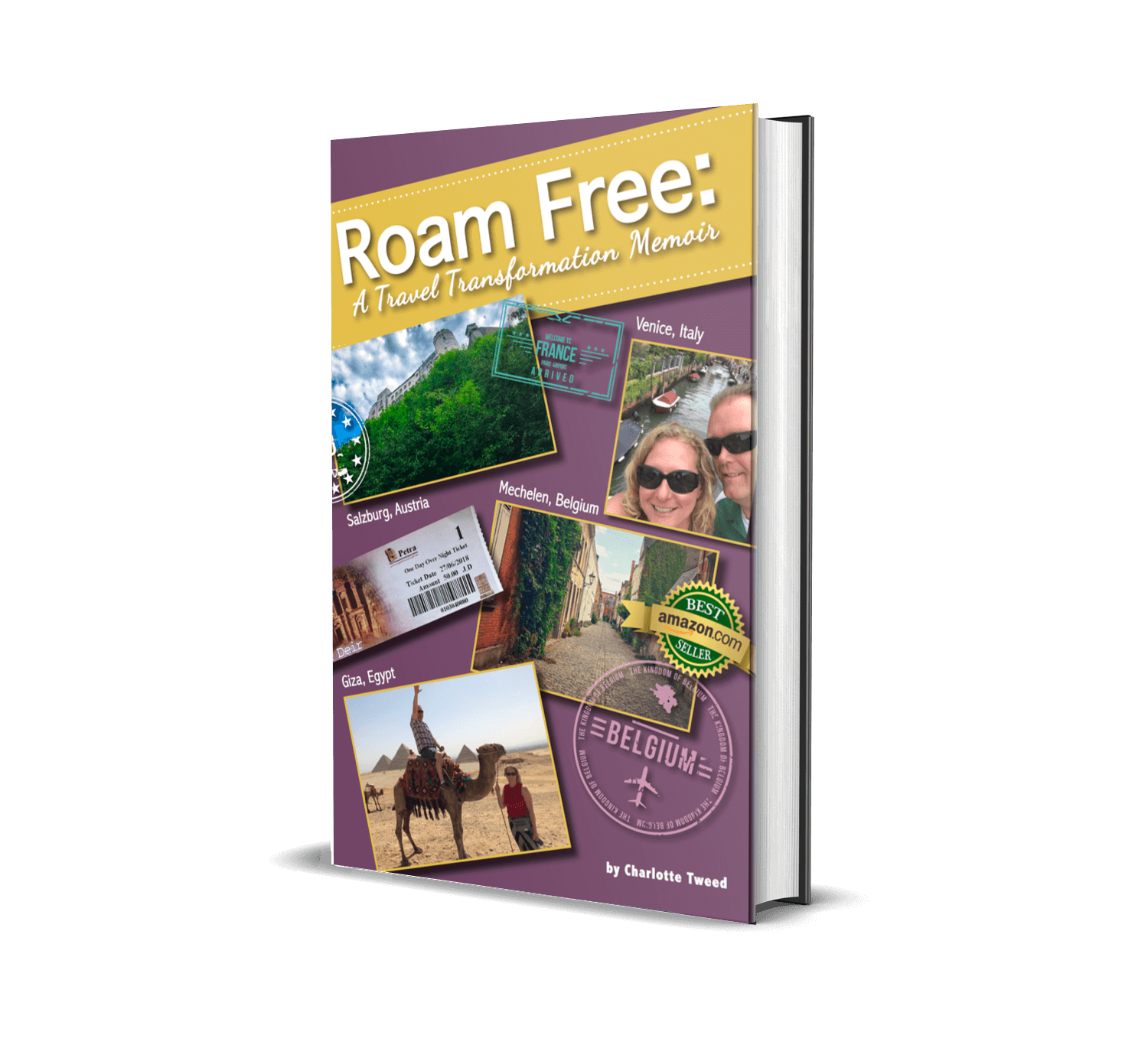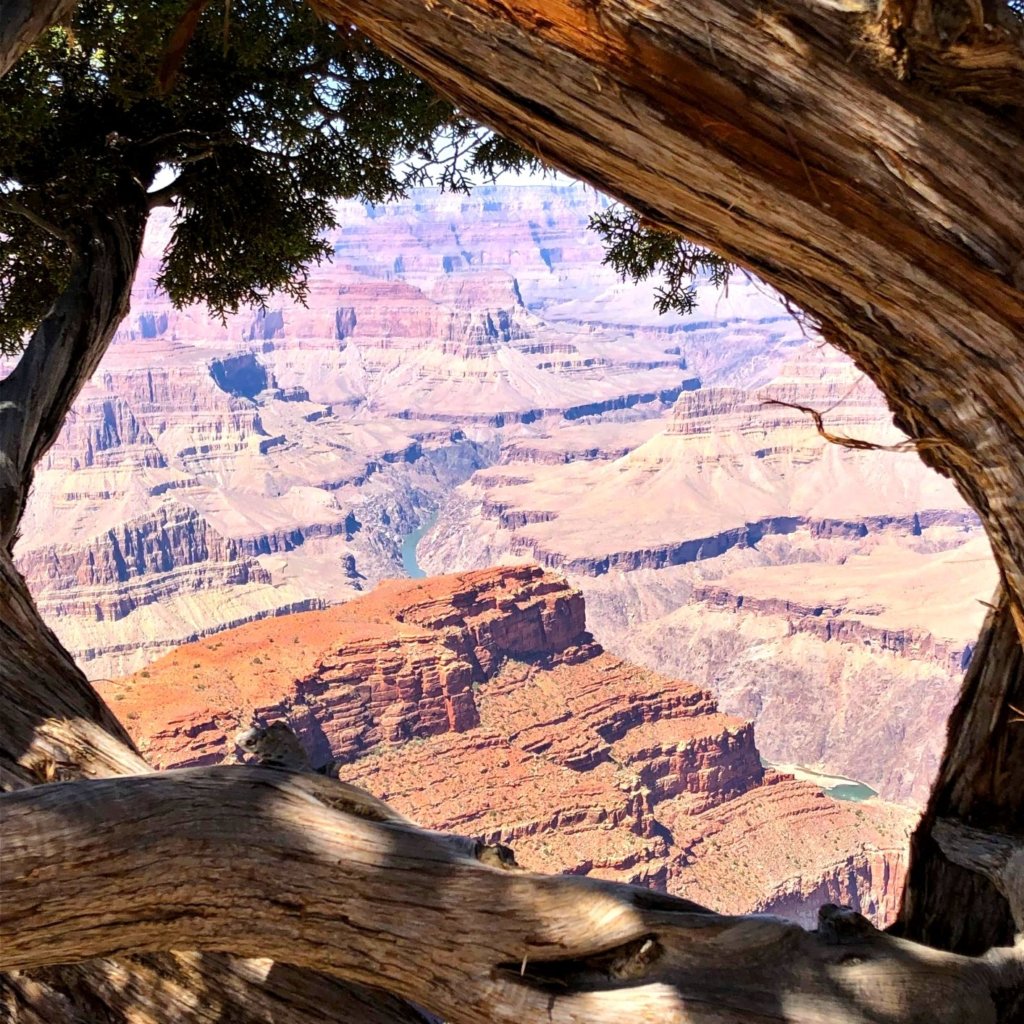
The landscape and historical sites on a US road trip are vast and diverse. From massive canyons to the biggest trees on earth, to white gypsum sand dunes, be prepared to take a ton of pictures and find inspiration in the beauty and grandeur of an incredible country. Grand Canyon National Park is probably one of the most famous of America’s parks. And for good reason. Looking out at the canyon it appears to be an artist’s canvas of watercolours. Not bright and vibrant, but a mix of fact and fantasy. You think you can reach out and touch it. So far away, yet so close—a mirage in the middle of Arizona. According to US New and World Reports Travel, the Grand Canyon is the #1 spot on their Best Places to Visit in the USA list. Is this enough to make you want to think about visiting the Grand Canyon?
Even though your travel plans for visiting the Grand Canyon may be on hold right now, we hope this article will offer inspiration for future adventures.
*Note: Some of these links are affiliate links, meaning that if you book through my link, I will make a small commission (at no extra cost to you).
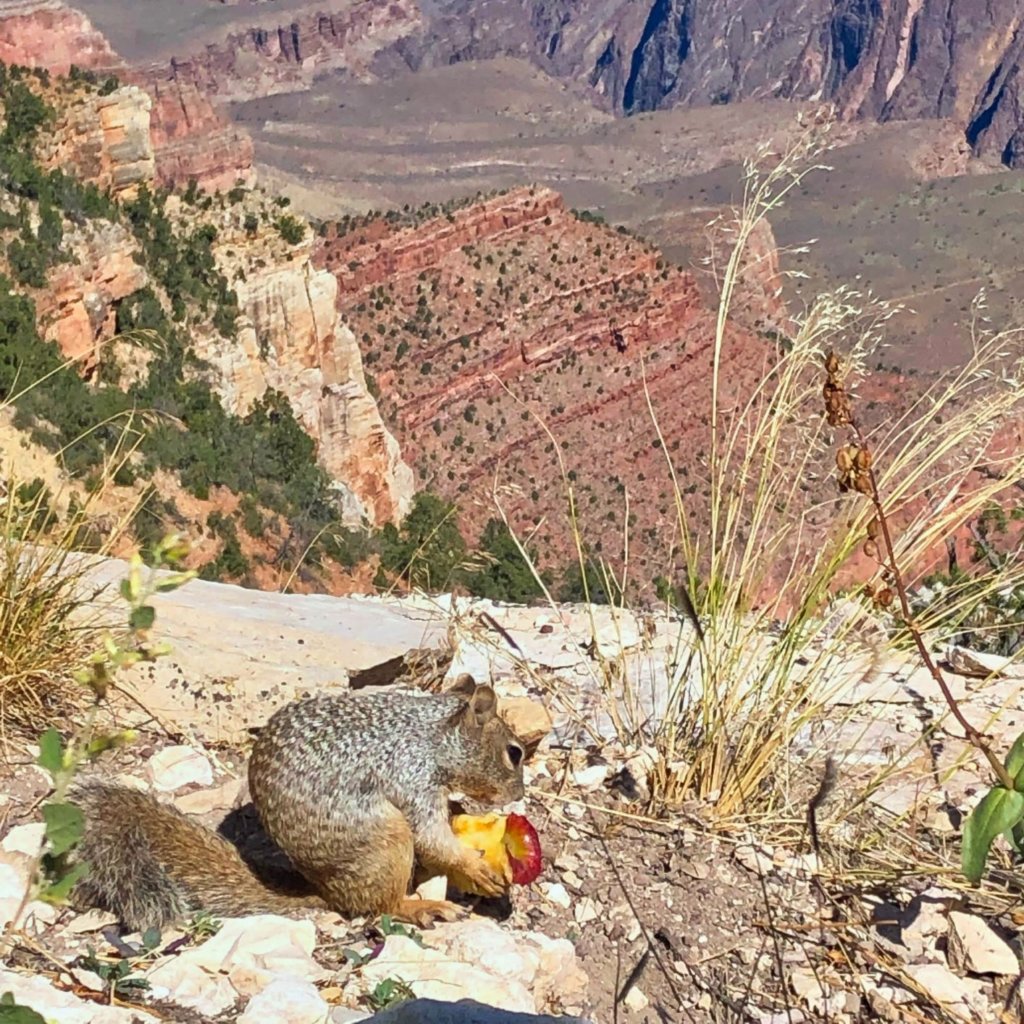
Ask Yourself: Why Do I Want to Visit the Grand Canyon?
Take a thoughtful approach to your future travels and why you want to visit certain places. Do you love to see animals in their natural habitat? Are you inspired by the awe of nature? Maybe you want to go where there is less human impact and hike to your hearts content. Think strongly about this last point before visiting the Grand Canyon. The hiking is phenomenal and the views are outstanding but there are a lot of people.
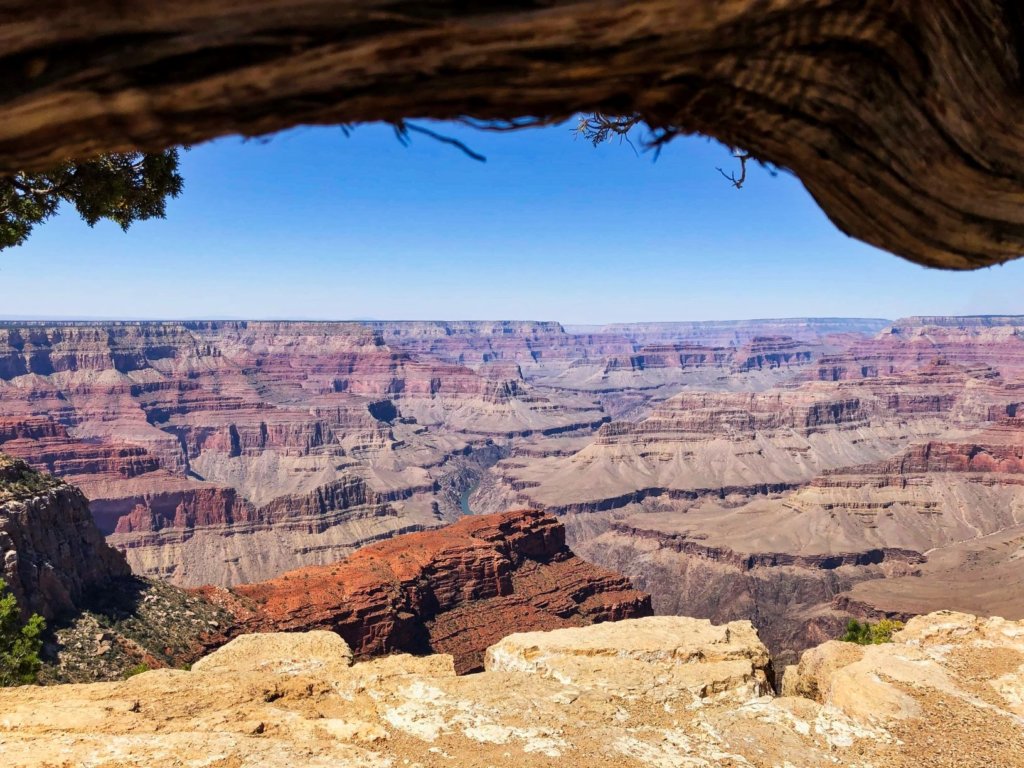
When to Arrive
Our visit took us to the park in early fall, but it was still busy at the South Rim. To maximize your visit, make sure to arrive at the Grand Canyon by 9:00 a.m. in order to get a parking spot in lots 1 to 4. There was a short lineup to get into the park when we arrived at 9:05 a.m. Lots 1-4 were full by 11:00 a.m.
Expect heavy traffic entering the park all day. The evening is also popular for people arriving to watch the sunset. Our visit was on the 100th Anniversary of the Grand Canyon’s inception into the National Park service, which may have brought more traffic than normal.
If you do not want to worry about parking, you can park in Tusayan outside the park gates and get a shuttle to the Grand Canyon.
Alternatively, you can catch a train from Williams and arrive right in the park.
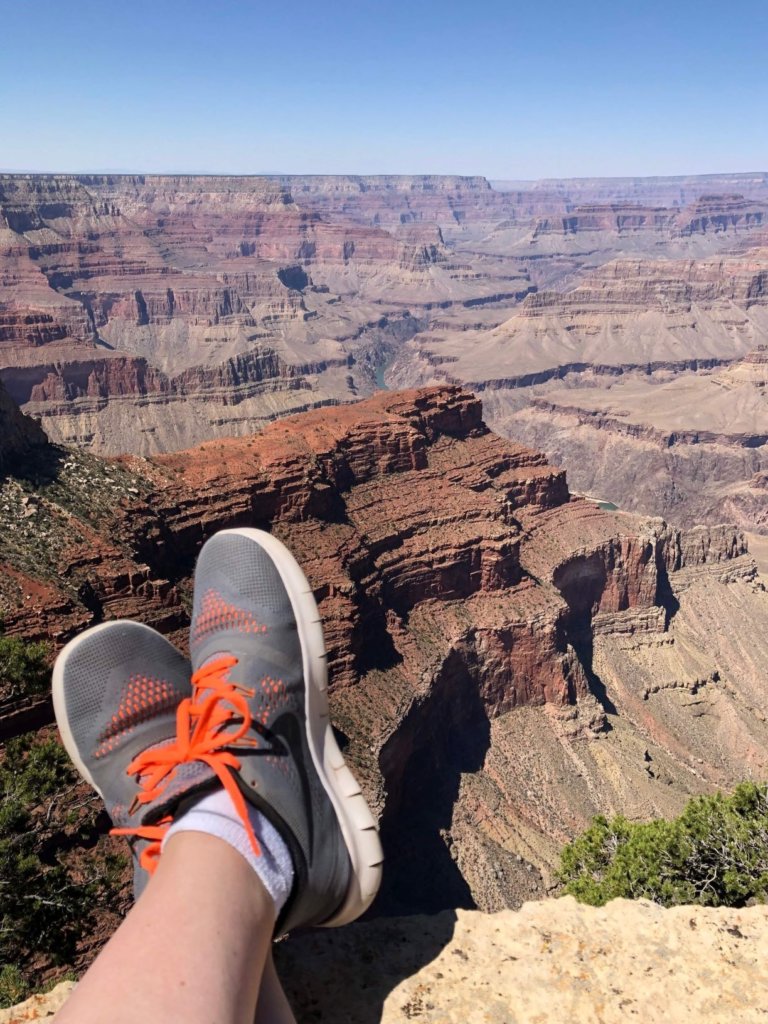
Shuttle Buses
There are free shuttles from point to point in the canyon so you can get off at the areas of interest to you. Be patient as there will be lineups and you may have to wait for the next bus. Do not despair, though, the shuttles arrive approximately every 15 minutes. Alternatively, you can hike from point to point. Do note, some of the trails have steep drop-offs with no railings so those afraid of heights may find this difficult. Elevation from the top to the bottom of the canyon is 5,000 feet.
Enjoy the commentary of the bus drivers as some will have a keen sense of humour to entertain their guests from point to point.
“What’s the difference between a Harley Davidson and a Hoover vacuum? The position of the dirtbag.”
Both laughs and groans were heard throughout our bus ride from this joke told by our friendly driver.
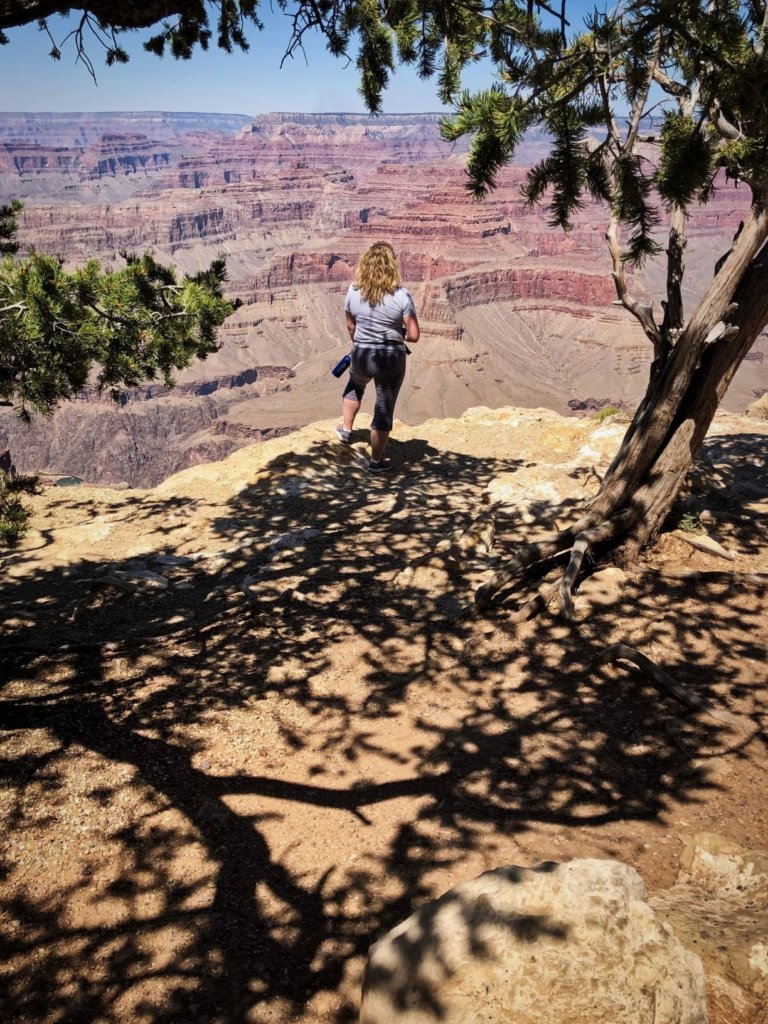
Food at the Grand Canyon
Weather can change quickly in the canyon so dress in layers. Take lots of water and salty snacks to stay hydrated and keep your energy up. Sunscreen is essential and apply often. There are not a lot of convenient or shady picnic areas in the park. It would be a good idea to take your snacks and water in an ice-thermal backpack. Food can be purchased in the park, but it is expensive. Expect to pay a premium price ($10 USD) for one basic sandwich. It is advised to pack a light picnic lunch.
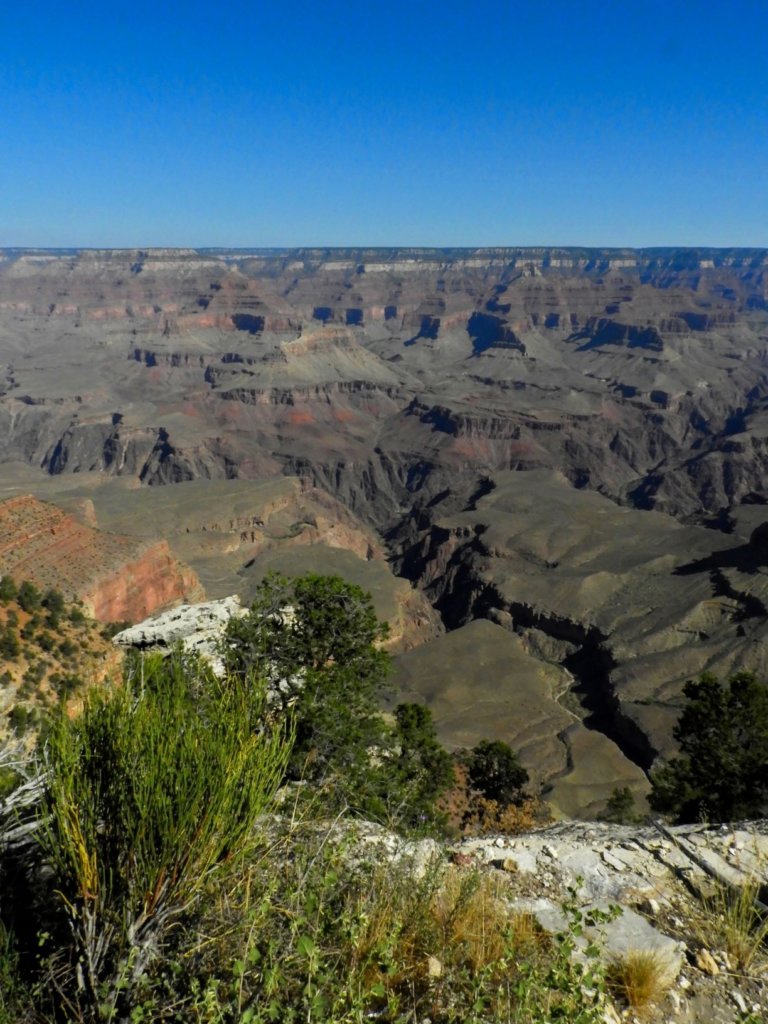
First World Problems: Bathrooms
Do not despair. There are bathrooms at Hopi (pronounced hopee) Point. So if you feel the need, you better make the pit stop.
Hermits Point is the only place on the trail where you can refill your water bottle. Also a good idea to make use of this life-saving stop.
On a side note, The Abyss is a vertical drop of 2,700 to 3,000 feet. Although it sounds dramatic, the view is not as exciting as it sounds because foliage covers most of the area and viewing sections are not great.
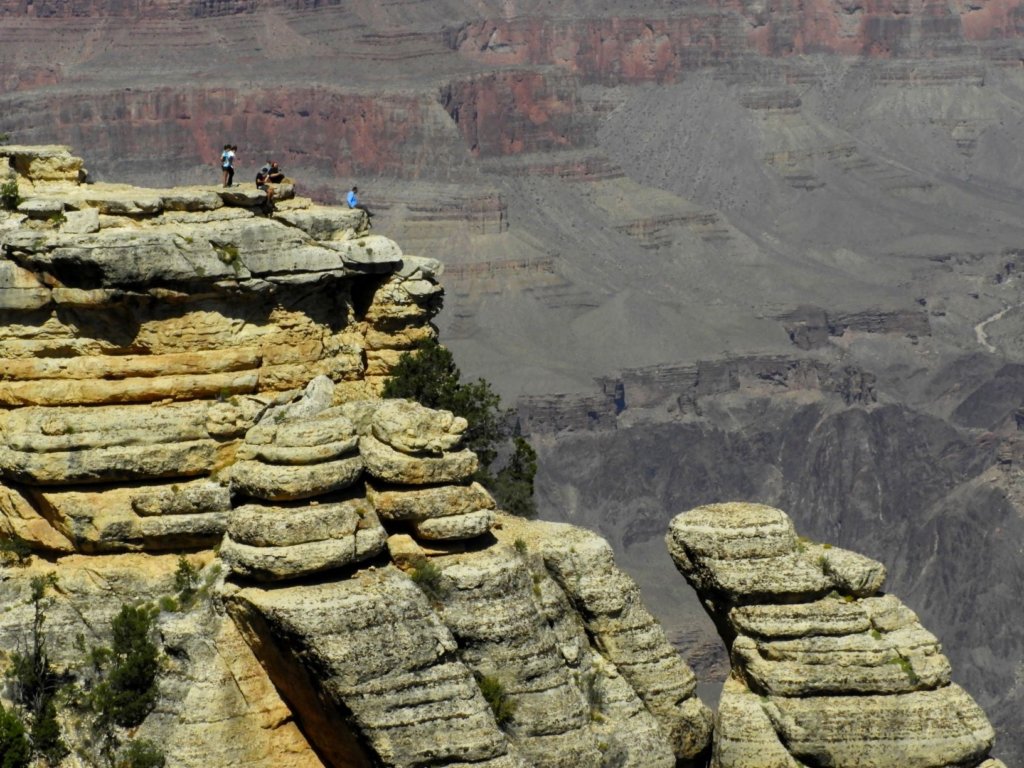
When is the best time for Visiting the Grand Canyon?
>Booking.comThe Grand Canyon is open year-round and each season has pluses and minuses. The rims and interior of the canyon also have their own seasons. The best time to visit depends on your tolerance to weather changes.
Summer
The weather can change quickly and even though the Grand Canyon is one place, there are two eco-systems—the rims and the canyon itself. Weather can be drastically different in both areas on the same day. Summer on the rims is from June through August. Whereas summer in the canyon is May to September.
In summer, the weather is beautiful and sunny on the rims, whilst the canyon itself is scorching. Day to night temperatures can also change due to the high elevation and low humidity. Take a jacket if you plan on being at the Grand Canyon at night. In contrast, the extreme heat in the canyon itself can be fatal to unprepared hikers.
Average rim temperatures range from 48°F (9°C) to 83°F (28°C). Inner canyon temperatures range from 72°F (23°C) to 104°F (40°C).
Spring and Fall
Spring and fall on the rims runs through April, May, September, and October. March, April, October, and early November are spring and fall in the canyon. Again, the weather can change quickly. The cooler temperatures in spring and fall offer better hiking conditions in the canyon. There is a possibility the rim can have snow during these times. May and October are typically dry but there is a chance of encountering the precipitation in the form of snow.
Average rim temperatures range from 32°F (0°C) to 63°F (17°C). Inner canyon temperatures range from 56°F (13°C) to 82°F (28°C).
Winter
Winter on the rims is from November through March and December to February in the canyon. The South Rim remains open year-round; however, the North Rim closes after the first heavy snowfall. Snowstorms can obstruct the canyon view so keep that in mind. On the other hand, imagine the contrast of the reds, browns and greens with the brilliance of fresh, white snow. That would give a completely different feel to the canyon.
Average rim temperatures range from 19°F (-7°C) to 45°F (7°C). Inner canyon temperatures range from 36°F (2°C) to 56°F (13°C).
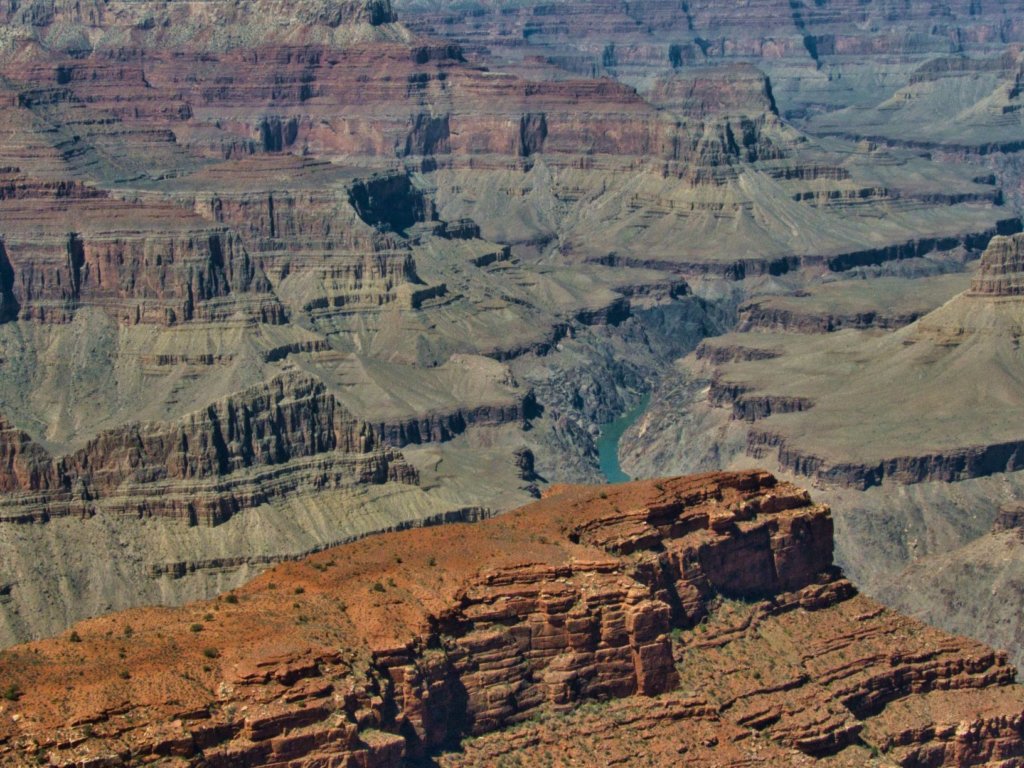
What should you do if you have 1-2 hours?
- Walk the Rim Trail 1-1.5 miles (1.6-2.4 km).
- Ride the Kaibab/Rim Shuttle Route (orange route runs year-round).
What should you do if you have a half-day?
- Walk along the Rim Trail between Grand Canyon Visitor Center and the Village (2.5 miles/4 km one way).
- Ride the Hermits Rest Route Shuttle (red route runs March 1 to November 30). This is one of the busiest shuttle routes and the one we took.
- Drive to Desert View Watchtower.
Small-town Travel Tip: Get off the Hermits Rest Route Shuttle at Hopi Point and walk the trail to Monument Vista Creek for some of the best views of the canyon.
What should you do if you have a full day?
- Attend the free park ranger programs for daily walks, talks, hikes, demonstrations, and evening programs.
- Visit the free park museums and visitor centers.
- Hike into the Grand Canyon. Go to the visitor center for details as you may require a permit to explore the hike you desire.


Visiting the Grand Canyon
If you have more than one day for visiting the Grand Canyon, take it. There is so much to see and do you may feel you have missed out if you only have one day. I felt a longing to explore the bottom of the canyon—a craving for something out of reach. Being at the bottom floating the Colorado River would give a completely different perspective on this magnificent piece of God’s creation. Looking up at the towering cliffs and California Condors soaring overhead would make a person feel tiny in comparison.
To thoroughly engage in the full Grand Canyon experience, take in Park Ranger programs, ride the mules, explore the skywalk, hike overnight, raft the Colorado River, soar like the condors on a helicopter ride, and take the train from small-town Williams. It would be impossible to do all these activities in one day. Ask yourself if you want to just see the Grand Canyon or encounter it fully for a truly transformational travel experience.
“Travel is one of the few things in life with a built-in triple bottom line: the excitement of planning, the thrill of the actual experience, and the enjoyment of lifelong memories.”
– Jessica Hall Upchurch, vice chair and sustainability strategist, Virtuoso.
For your in-depth trip planner and hiking map, check the official National Park Service website.
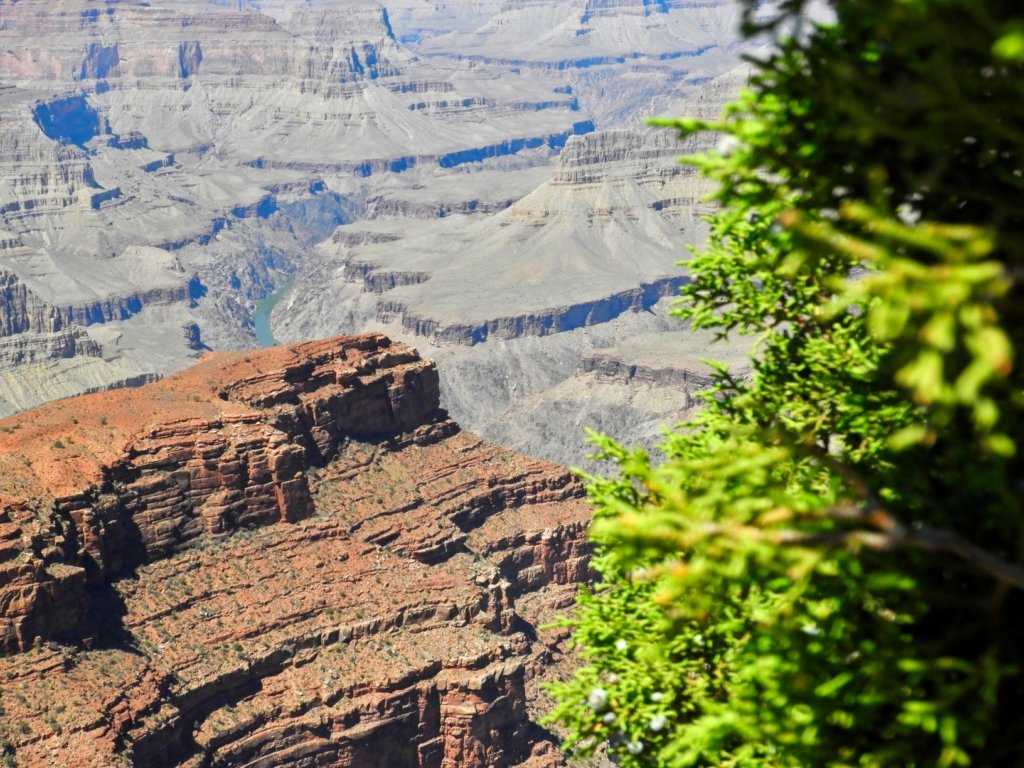
All pictures in this post are taken by Charlotte, yours truly, as always, unless otherwise stated.
Mission statement: Transform your life with travel—one destination, one adventure, one story at a time.
